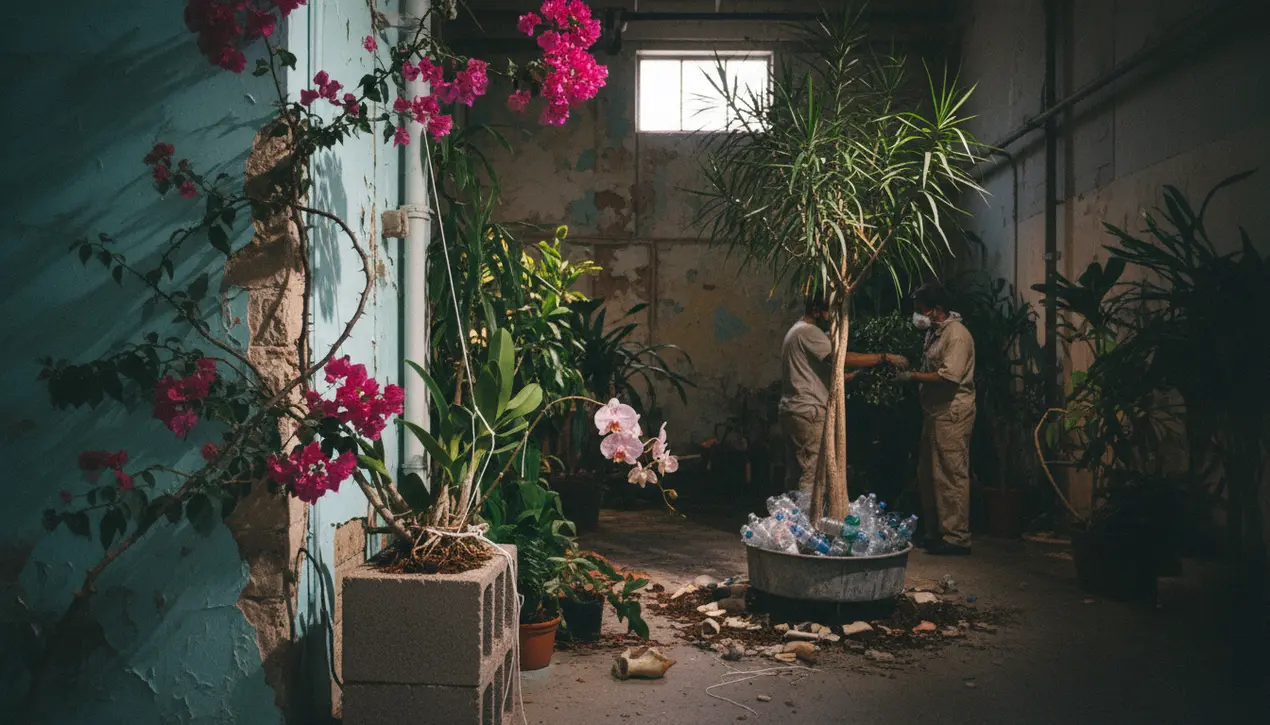
Entertainmenttheatre & artsArt Exhibitions
Cultivating Dissent: Miami's Botanical Art of Resistance
RA
Rachel Adams
3 hours ago7 min read
Within Miami's vibrant art underground, a powerful ecological critique is flourishing. Two artists are employing non-native plant species as their primary medium to interrogate the parallel dynamics of gentrification and migration that are reshaping South Florida.Their work transcends traditional exhibition, functioning as a deliberate ecological intervention where each imported orchid and displaced palm tree stands as a living testament to the human communities being similarly uprooted and replanted across the region's transforming socio-economic terrain. With the meticulous approach of ethnobotanists, the artists source flora from regions that mirror Miami's diasporic roots—the Caribbean, South America, and other tropical zones—installing these botanical migrants in reclaimed urban spaces threatened by speculative development.Their installations create an unavoidable confrontation with the paradox that the capital flows financing public art and green spaces often simultaneously drive the displacement of long-standing, culturally rich neighborhoods. This artistic practice illuminates the global phenomenon of 'green gentrification,' where environmental beautification inadvertently accelerates rising costs and cultural erosion—a dynamic urban researchers have documented, but here rendered with tangible, breathing urgency.The strategic use of non-native species constitutes a masterful subversion; plants typically branded as 'invasive' are recontextualized as emblematic of resilience, directly paralleling the experience of migrant communities who revitalize cities while confronting political stigmatization. A particularly striking installation in Little Haiti features a luxuriant, defiant garden behind chain-link, its botanical profusion symbolizing the cultural vitality resisting homogenization by market forces.The artists critically engage with their own position within the art economy, acknowledging its potential complicity in the very processes they critique—a self-reflective tension that deepens the work's intellectual rigor. By anchoring their narrative in the sensory, living reality of photosynthesis and root systems, they move beyond academic discourse to create an empathetic, physical connection to the land.This land, with its history of radical transformation from Everglades drainage to relentless coastal development, becomes the central character. The project stands as a living archive of Miami's contemporary metamorphosis, a biodiverse form of protest that challenges viewers to consider not only who the city belongs to, but what physical and cultural materials constitute its foundation, and what future it might cultivate as both ocean and economic tides continue their ascent.
#featured
#Miami art scene
#non-native plants
#gentrification
#migration
#South Florida
#contemporary art
#subversive botanicals
Stay Informed. Act Smarter.
Get weekly highlights, major headlines, and expert insights — then put your knowledge to work in our live prediction markets.
Comments
Loading comments...
© 2025 Outpoll Service LTD. All rights reserved.